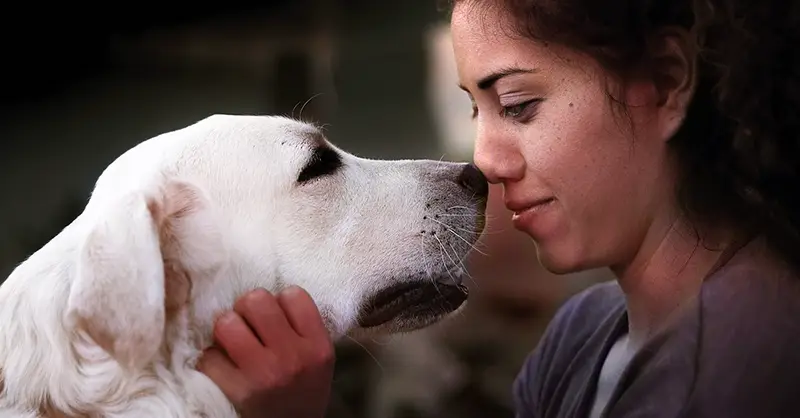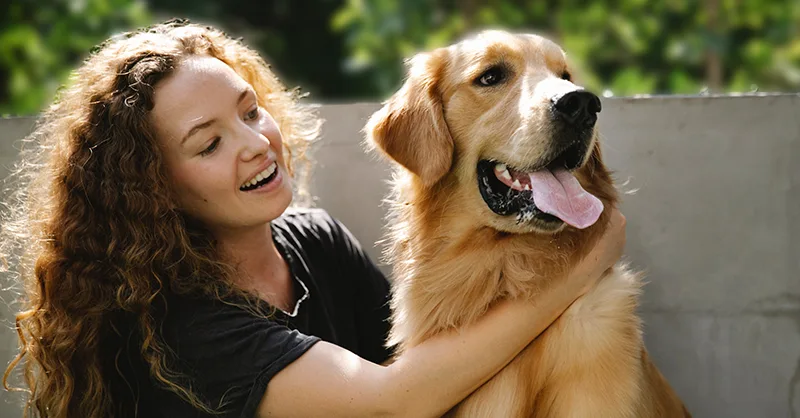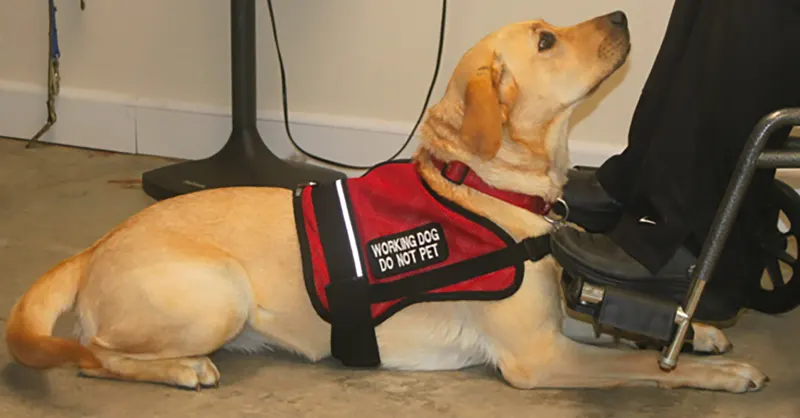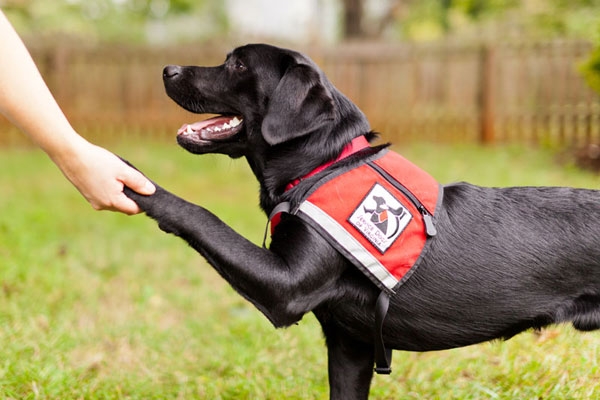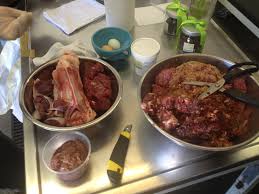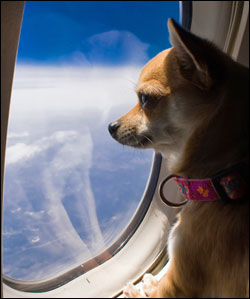Archive for the ‘Service Dog Tips’ Category
Training service dogs
Service Dog Training
A service dog, unlike other dogs is one that is trained to help people with physical, psychological, and hearing impairment. Please remember that there are many psychological disabilities that can be hidden from plain sight.
The tricks for good service dog training
Training your dog the basics among the various distractions and in new environments is part of being a good handler. This will most definitely help you evade future behavioral issues. The best training will strengthen your bond with your service dog. When you are training your dog, you are actually teaching the dog to share a common language of words accompanied by signals. Training your dog obedience commands provides you with a vocabulary for communicating with him/her effectively.
What you should do in a training session
Every service dog training session should begin with a quick warm-up, despite your dog’s proficiency level. Make sure to continue with past repetitions with your dog before engaging in any new steps. Always ensure that your dog training sessions are fairly short, such as five to thirty minutes. It is advisable to always end each session at a positive point, since this will help your dog remember the session even better. However, it is convenient not to agonize about which exact repetition you end on, and work on what you want to work on. Nevertheless, ensure that you are faithful to the push-drop-stick rule, and have your dog do the steps in order.
Training Session
The four basic behaviors that constitute obedience include: sit, watch, down, come, and stay. Sitting along with lying down can replace jumping on people or begging at the table. Asking your dog to sit and watch can get you out of countless jams while you are out on walks. Your dog will not strain at or bark at people on the street if he is sitting and watching. If your dog comes to you when called, he can be granted off-leash access, which in turn mentally as well as physically tires him. Sits and downs are prerequisites for stays.
There is no rush for verbal commands. One of the biggest errors you can do as a trainer of a service dog is chat commands. You are not to introduce verbal commands, not until a behavior is far along. Therefore, once your dog performs reliably for a hand signal, you can thereafter start placing the verbal commands. Remember, always before, and never during or after the hand signal. By following this, the verbal predicts the learned signal, leading to a Pavlov’s dog effect over time. Your dog will start responding to the verbal cue as he did to the hand signal. You will realize that when you train more advanced behaviors in future, a great deal of training takes place before you give it a name.
Use of Dog Shock Collar
There are many handlers that use shock collars, but I am not a proponent of using punishment for negative behaviors. Negative reinforcement can work, but there have been studies that suggest this type of behavior correction can be stressful for dogs.
Basic rewards for training
To effectively instill obedience on your dog; you will need to crank out many repetitions, rewarding your dog after each one of them. The more you train your dog the stronger the behavior gets. Whatever motivates your dog should be something that he or she is willing to work for. The most basic motivator is food; your dog will be motivated by and will work for food.
Best Foods for Dogs with Cancer
Your dog’s nutrition impacts every aspect of his life, including growth, behavior, and health. So to make sure that your dog is free of cancer, you need to feed him with homemade dog food and raw dog food. Remember the key components that you want to get out of the food you feed your dog is health. This constitutes of how long your dog will live and the quality of life he will lead.
Raw meat: A raw meat diet is the most essential and important diet plan that can help your dog against cancer. This diet will provide your dog with naturally balanced nutrition. The animal fats will keep your dog’s skin and coat elastic and smooth. Chewing of raw meat helps the gums and teeth stay cleaner and healthier. The proteins supplied by the meat will provide your dog with energy and vitality. Moreover, the bones accompanied by natural cartilage will help your dog have strong bones along with healthy joints.
Sea vegetables: These are the best sources of minerals for your dog. They are ideal foods for your dogs, since, unlike most plant foods, they are easy to digest. They are rich in protein as well as low in fat and salt. Sea vegetables present several nutritional benefits for your dog, such as: preventing cancer and fighting tumors, enhancing your dog immune system, supporting thyroid function, providing extra iodine, assisting in the treatment of cardiovascular disorders, preventing heavy metal accumulation, and assisting with post-cancer treatment.
Oily fish-salmon: Oily fish are rich in omega-3 fatty acids, which will help your dog fight cancer, heart disease and arthritis. Omega-3 fatty acid supplementation helps to keep cancer cells from growing and spreading. Omega-3s are recommended for dogs with cancer, just as they are now being used by veterinarians in dogs whose heart condition is critical. Unlike other nutrients that you supply your dog with, you are advised to consult your veterinarian as far as the amount of omega-3 your dog should ingest.
BARF dinner: This diet is rich in protein and other nutrients and it is convenient if your dog has cancer. You need one pound of raw meat, one raw egg, half chopped clove garlic, a teaspoon of honey, a teaspoon of apple cider vinegar, half a teaspoon of flaxseed oil, and two hundred and fifty milligrams of vitamin C for dogs. Mix the ingredients together and serve. The raw meat should constitute of beef chunks, raw chicken, lamb or mackerel.
Turkey stew: This stew can help your dog’s teeth, offer natural calcium besides phosphorus and add variety to your dog’s diet, which are essential in fighting cancer. What you need to come up with a homemade turkey stew include: 1 pound of minced turkey meat, one cup of rolled oats, one cup of chicken broth, one tablespoon of chicken gravy, half a cup of green beans, and half a cup of finely chopped carrot. Combine all the stated ingredients in a pot and cook over medium heat until turkey meat is cooked through and oats have started to smell. Allow the stew to cool before serving your dog.
Oranges and grapefruit: Oranges contain pure vitamin C good for supporting your dog’s immune system, reducing cholesterol, and a powerful anti-cancer element. The skin comprises of oils that stimulate the immune system, which are used in cancer treatment. Grapefruit is rich in calcium, vitamin C and A, magnesium, phosphorous, vitamin K, and raises the efficiency of your dog’s nutrient absorption in addition to effectiveness of other fruits and vegetables when mixed. When combined with oranges, they form an effective cancer fighting tool.
Flying with a dog in cabin
Flying With Your Service Dog
Service dogs are not just for the blind! If you have a service dog that is an emotional support animal you may have experienced some problems when traveling with your dog. Every service dog card and service dog certification should be enough information to travel with your dog but unfortunately you may still run into trouble.
Before you travel taking some extra steps to insure that you can board your flight will save you a great deal of stress.
Visit Your Vet
No matter where you plan on traveling you will need a health certificate for your companion. You will need to be sure that the immunizations are up to date. Call the airlines that you will be traveling with to find out if there are any special requirements that need to be fulfilled by your veterinarian before you can travel with your companion.
For your companions protection have them micro chipped. Take recent pictures of them and write down facts about them, like their weight and any unusual markings or behaviors just in case something should happen to separate you from them.
At A Minimum
When traveling within the bounds of the USA it is not necessary to provide a service dog card or a service dog certification (although it is always a good idea to have them when traveling) as a matter of fact it is considered illegal to bar travel to anyone that is traveling with an obvious service dog but just in case have them.
When traveling outside the US the laws do not protect you.
Traveling Outside the US
Before you make your reservations for travel contact the consulate in the country that you will be visiting (most have websites) and see what the rules are for service dogs. Most countries are pretty liberal when it comes to rules and regulations but always always check!
Packing For the Trip
You will need to pack for your companion as well as yourself. Bring disposable bowls that can double as “scoops” after toileting. Bring an extra collar or harness just in case. Bring your companions favorite blanket so they can get rest in between the trip.
The Flight
Flying with a service dog or emotional support animal requires that you make some considerations about your companions ability to handle the flight. Your animal may have to be handled at security check points at the airport. To make for an easier flight insure that your animal can tolerate being handled by strangers well.
Do make sure that your companion has enough off time from work to rest. Travel is usually very stressful for service animals. Remember they are worried about you AND they are worried about themselves as well!
[Editor’s Note: Please be aware that this material does not serve as legal advice. As with all blog content discussing any legalities, be sure to consult Federal and State laws specific to your area before implementing any of this advice into your practices.]
